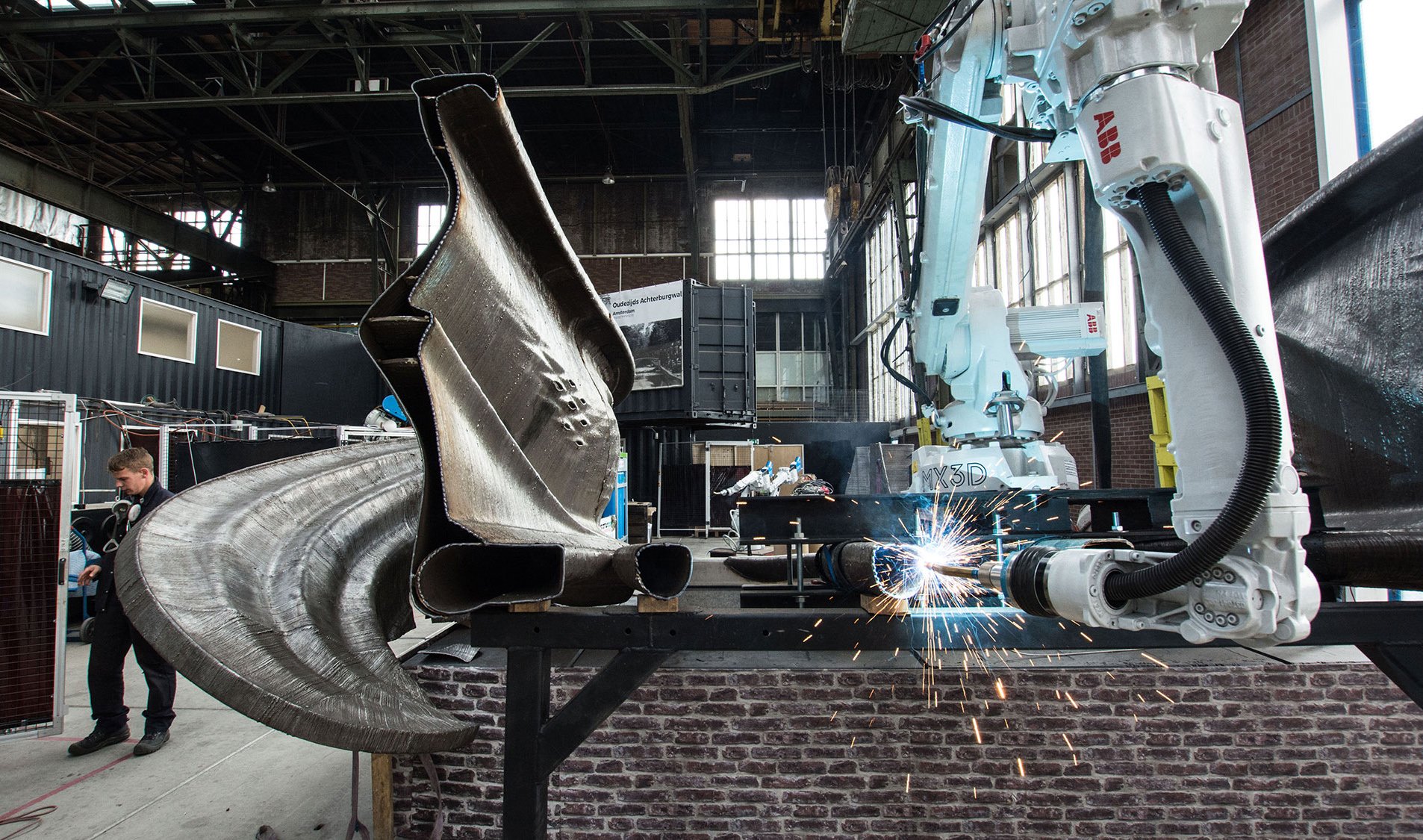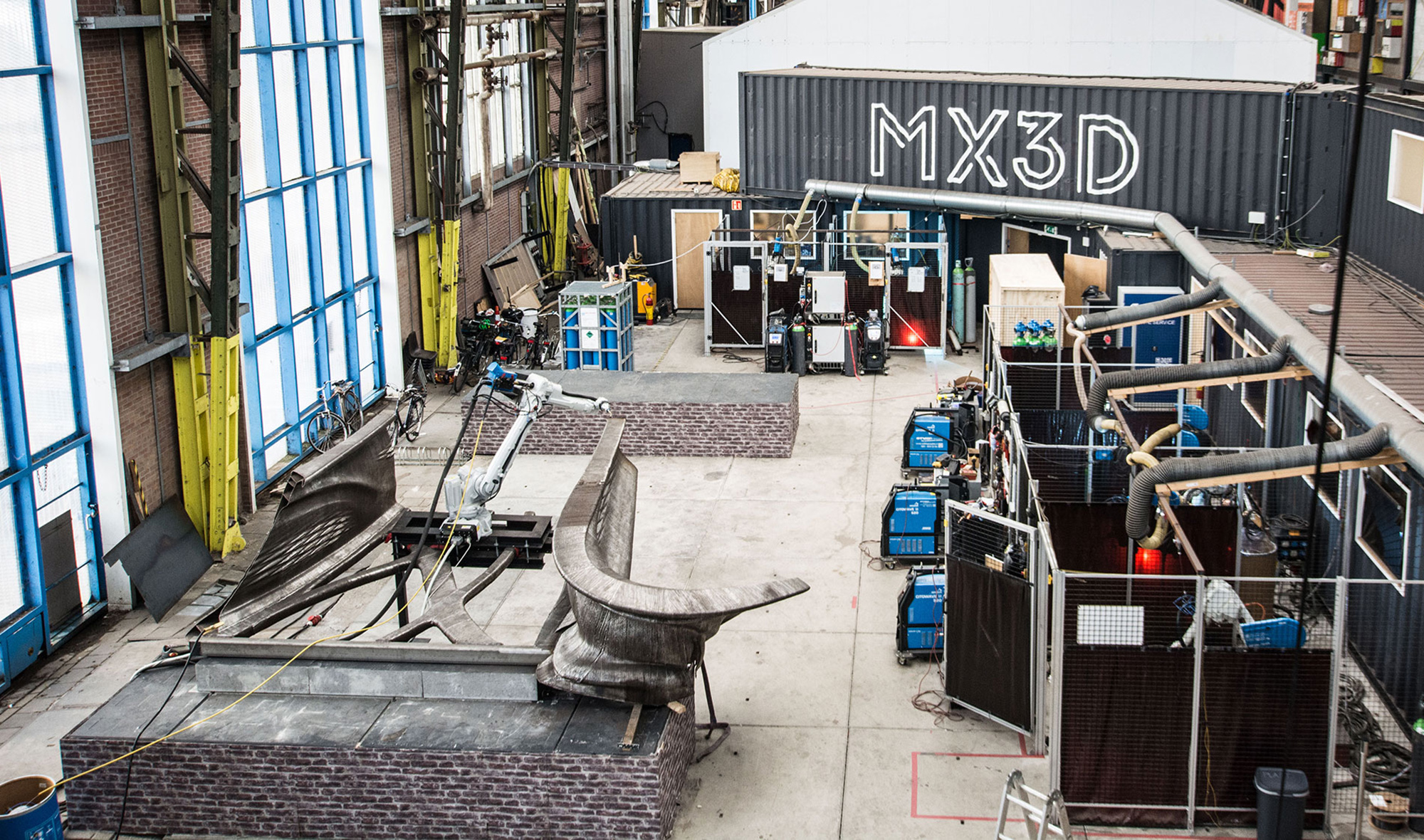 Pien Niehe
Europe Press Office,Amsterdam
Pien Niehe
Europe Press Office,Amsterdam
This week, the first part of a steel bridge printed by robots was released to public with this video showcasing how we approached this. Arup is helping MX3D with the structural design, testing and monitoring of this pedestrian bridge which will be installed following completion of the canal wall renovation on the Oudezijds Achterburgwal in the Amsterdam city center.


